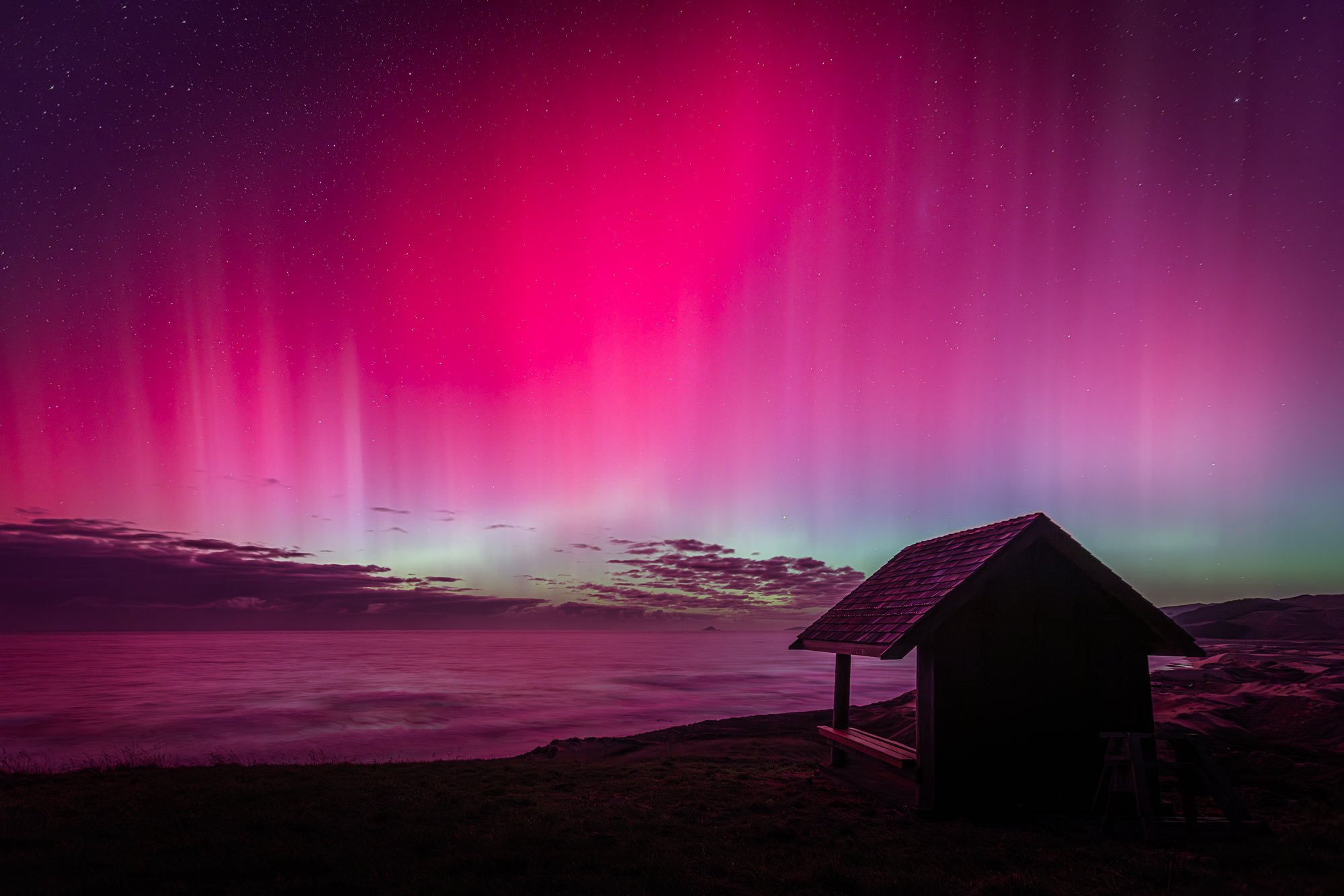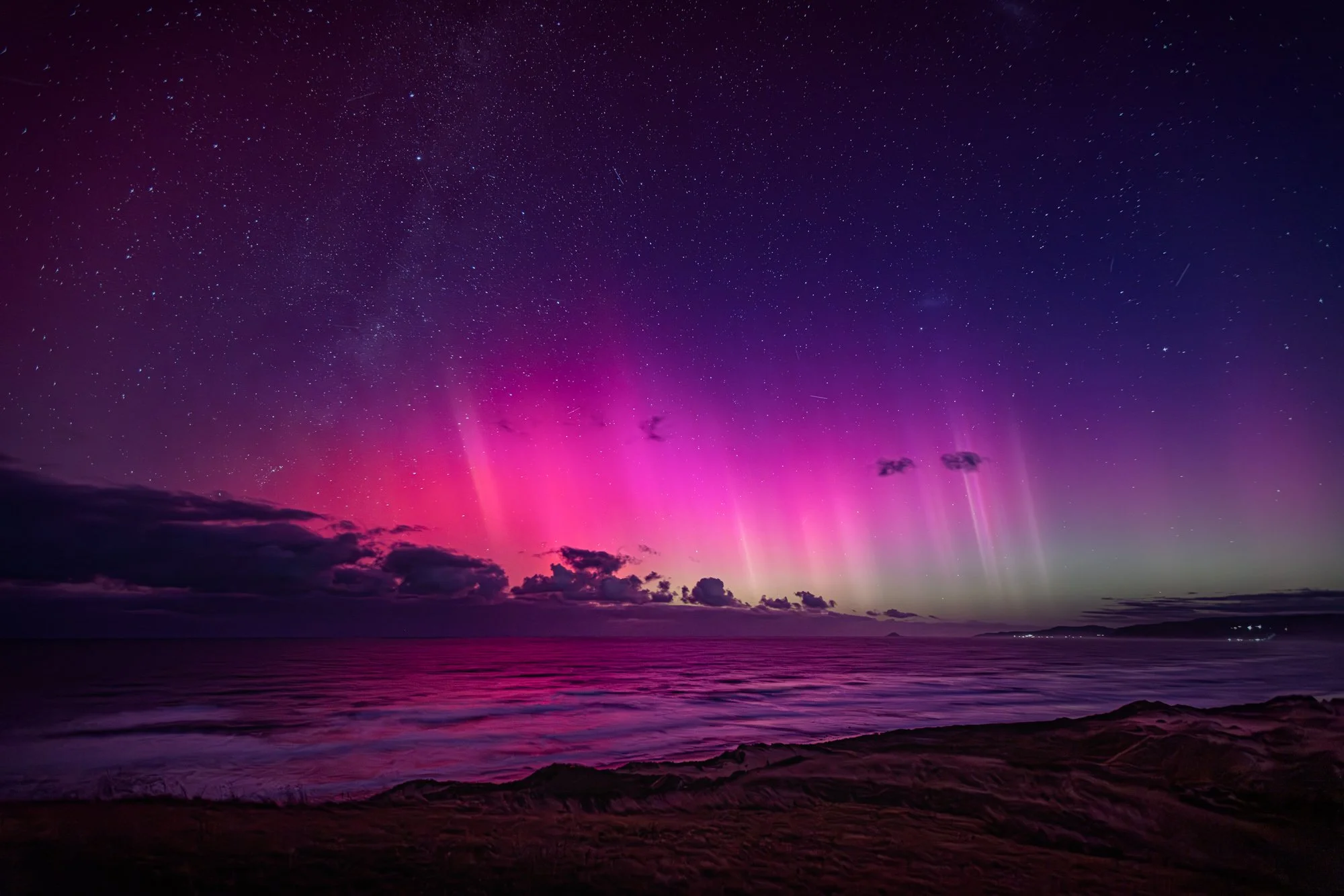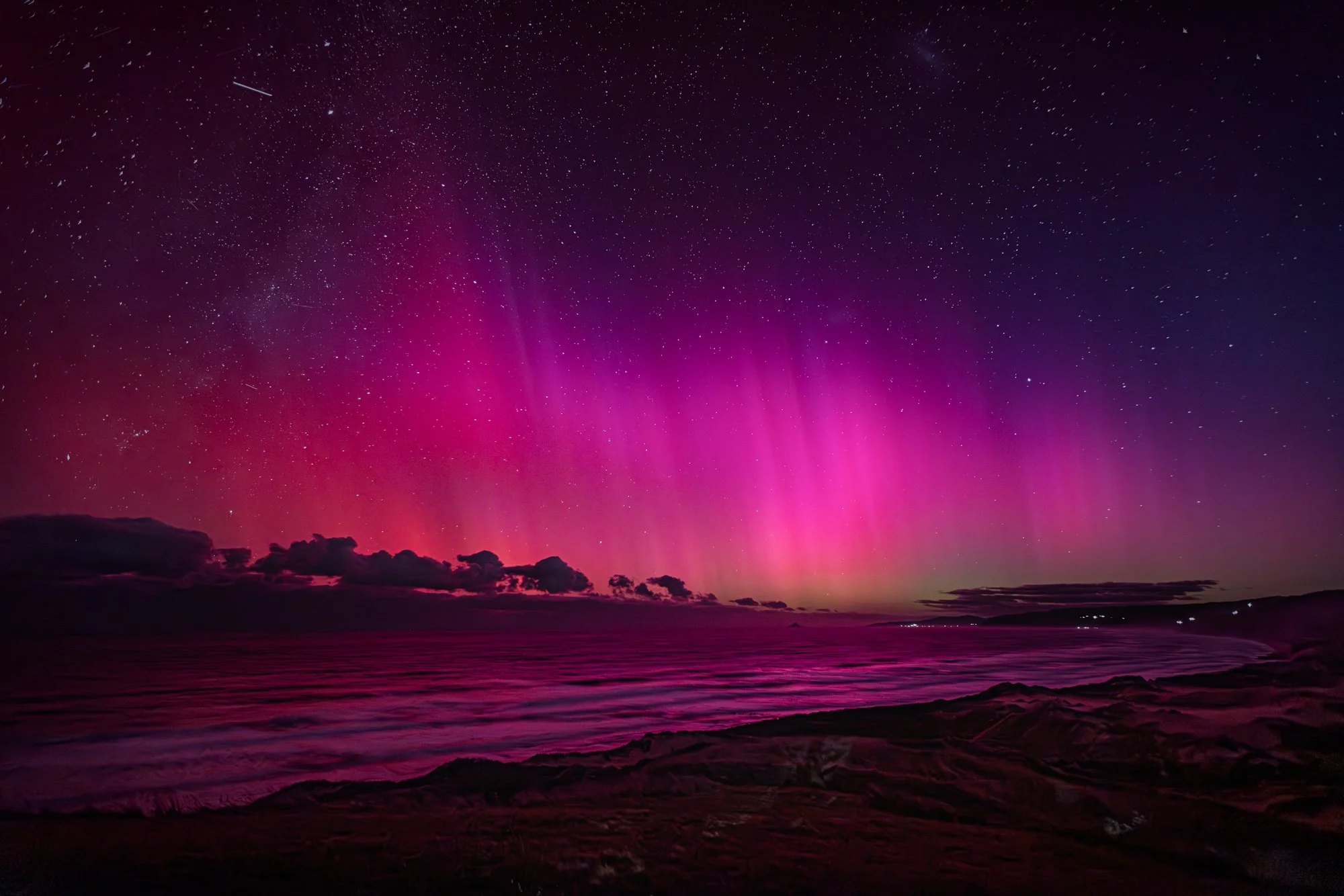Aurora Australis: A Spectacular Light Show Over Hawke's Bay
Stitched 180 degree panoramic consisting of 17 separate overlapped images, each exposure being 4 seconds at f/2.8, ISO 4000. Processed in Adobe Lightroom and Photoshop.
This weekend's celestial spectacle over Hawke's Bay (and many other parts of New Zealand, and indeed the rest of the world) was a magnificent treat for photographers, astronomers and stargazers alike! The Aurora Australis, also known as the Southern Lights, put on an extraordinary display that left viewers in awe - the best show in 20 years!
Three photographers, Richard Wood, Chris Helliwell and myself were granted permission to head out onto Cape Sanctuary, located at the northern end of Ocean Beach to photograph the spectacle - a huge privilege to be given access, so many thanks to Liz and Andy Lowe for this!
What is the Aurora Australis?
The Southern cousin of the Northern Lights, the Aurora Australis, is a natural light display predominantly seen in the Southern Hemisphere.
It’s caused by solar winds (streaming particles from the sun) colliding with Earth's magnetic field and upper atmosphere.
These interactions between the particles and our planet's gases result in glowing effects that often can be seen to dance across the sky.
May 2024's Spectacle: A Rare Treat for Hawke's Bay
In a rare occurrence for this latitude, the skies over Hawke's Bay were painted with shades of red, pink, purple and green. What contributed to this rare event?
A significant solar storm heightened the intensity of the auroras.
Clear skies on Saturday provided the perfect backdrop for the lights to be visible further from the poles than usual.
The relatively low light pollution levels in Hawke's Bay offered an unobstructed view of this natural wonder.
Looking Ahead: When Will It Happen Again?
Predicting aurora is a bit like forecasting the weather. Here are a few takeaways on when you might next witness the Aurora Australis:
Solar activity peaks approximately every 11 years, influencing aurora frequency and intensity.
Monitoring websites and alert services can provide a heads-up when conditions look right. I use an app called 'Aurora' by Northern Lights Online.
During the southern hemisphere’s winter and around equinoxes, your chances are far greater.
In conclusion, the Aurora Australis which provided such a spectacle in the night skies of Hawke's Bay was not only a feast for the eyes but also an illustration of the beautiful interplay between the Earth's environment and cosmic forces. Keep an eye on the skies, and on scientific updates - nature's most exhilarating light show might just make another grand appearance!
Looking towards Waimarama - Aurora Australis with a satellite passing overhead, as seen from Cape Sanctuary, Hawke's Bay, NZ. 4 seconds at f/2.8, ISO 4000. Processed in Adobe Lightroom and Photoshop.
All images are strictly copyright © Simon Cartwright Photography Ltd 2024.
No usage is permitted unless written consent has been obtained prior. For media, commercial or any other usage, please contact Simon to discuss licensing options.




